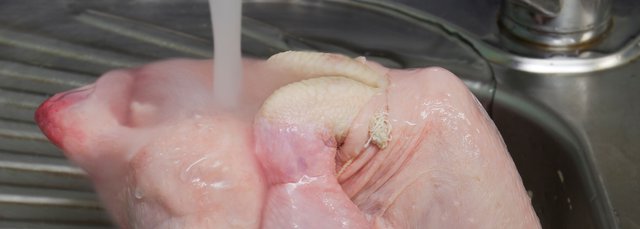Water droplets can travel more than 50cm in every direction. Only a few campylobacter cells are needed to cause food poisoning.
Most cases of campylobacter infection come from poultry. About 50% of the chicken sold in the UK carries the bacteria. Campylobacter poisoning can cause tummy pain, severe diarrhoea, and sometimes vomiting for between two and five days.
Find out more about the symptoms of food poisoning. In certain cases, however, it can also lead to irritable bowel syndrome, reactive arthritis and Guillain-Barré syndrome.
How to prevent campylobacter poisoning
1. Cover and chill raw chicken
Cover raw chicken and store it at the bottom of the fridge so juices can’t drip onto other foods and contaminate them.
2. Don’t wash raw chicken
Cooking will kill any bacteria present, including campylobacter, while washing chicken can spread germs by splashing.
3. Wash used utensils
Thoroughly wash and clean all utensils, chopping boards and surfaces used to prepare raw chicken. Wash hands thoroughly with soap and warm water after handling raw chicken. This helps stop the spread of campylobacter.
4. Cook chicken thoroughly
Make sure chicken is steaming hot all the way through before serving. Cut into the thickest part of the meat to check that it’s steaming hot with no pink meat and the juices run clear.

